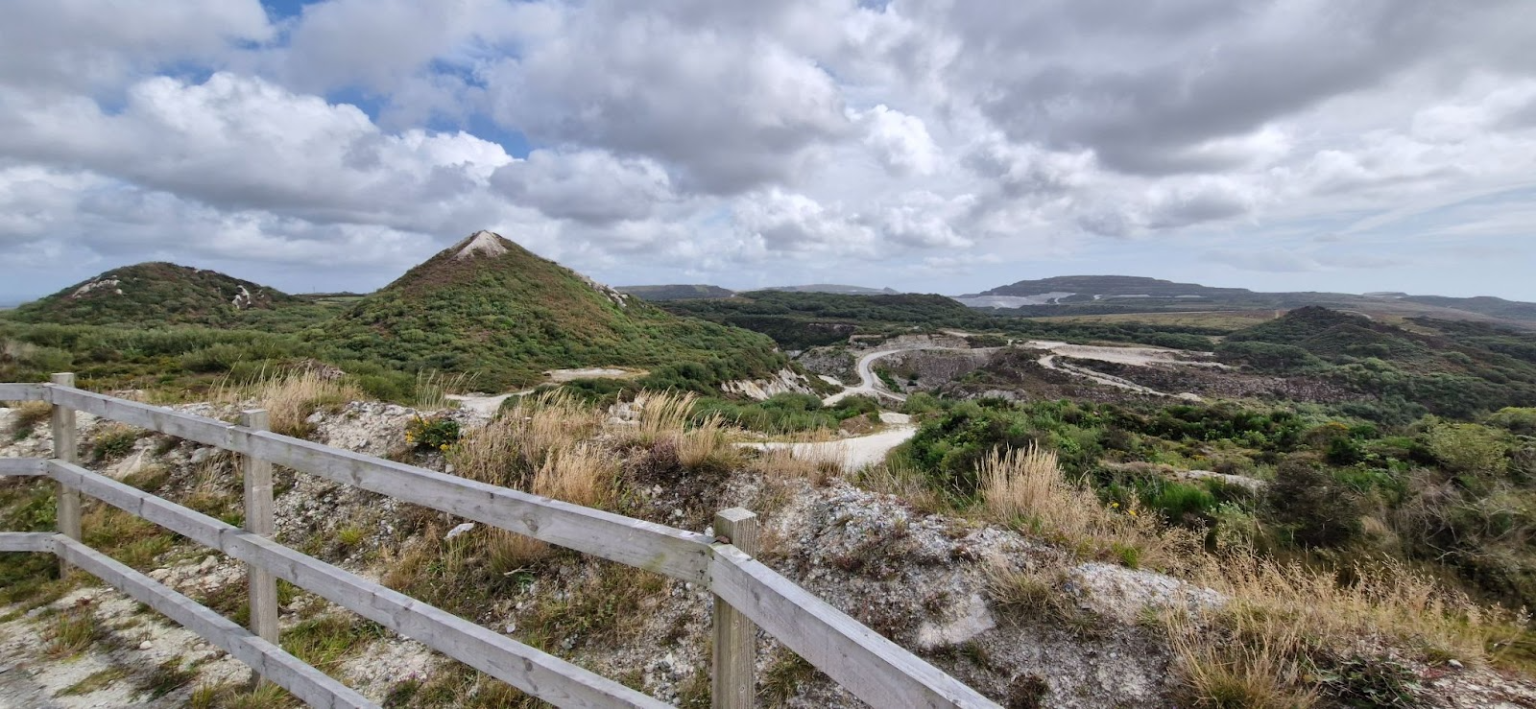Unearthing the Future: Groundsure’s visit at Trelavour, with Cornish Lithium
Groundsure had the opportunity to visit the Trelavour Hard-Rock Lithium Project near St Austell, operated by Cornish Lithium on the 26th of August.
Groundsure has deep roots in mining data, historical records, and environmental assessment and our visit was a fascinating chance to see how a legacy industrial site is being transformed into the cornerstone of the UK’s future clean energy supply.
The visit kicked-off with a check in and a warm welcome by Eldon Douglas – the on-site Environmental Officer & Ecologist at Cornish Lithium. Following a health and safety briefing and kitting ourselves out in the appropriate PPE, we started the tour. As we drove deeper into the site, the sheer scale of the project quickly became clear. What was once a china clay pit and dries, is now home to one of the UK’s most ambitious mineral extraction and processing demonstrations. Historically, Cornwall’s landscape has been regarded as a huge part of the British mining story; from tin and copper through to the kaolin boom. Today, it’s being reimagined once again with a drive to extract critical metals such as lithium from our own Cornish landscape, ensuring that any impacts to that landscape are offset or improved. This action could have a really positive impact for the local communities and the Cornish economy.

The Groundsure team were especially intrigued by how Cornish Lithium is applying low-carbon extraction processes, and moving away from traditional high-heat roasting. Favouring instead a hydrometallurgical route that dramatically lowers the environmental impact. For us as a team, seeing the early stages of this process and hearing about the future goals – soon to reach commercial production, it truly brought to life what we usually interpret from data and maps within a remote setting.
Upon entering the pit site, the security guard told us about some of the wildlife that they encounter during overnight patrols. We were amazed to hear that within this industrious setting, there are a number of badger families, and sizable snakes roaming around and giving the security staff a jump in the night! Certainly for Eldon at Cornish Lithium, this was valuable information to receive and something that he can feed back to the team – so they can consider these species further in their upcoming work. It was a great example of the team working collaboratively. The security staff were genuinely excited to share their findings with the ecology team.
Eldon was keen to point out key historic features that we could see from the viewing platform. These include the former pump house, Trelavour Old Pit and the circular settling ponds, which relate to the later Hendra China Clay Works – now lying beneath the undergrowth. A representation of these can be seen in the Ordnance Survey mapping shown below. At the time this map was produced, this area was already disused and the settling ponds had already begun to become overgrown.
What made our Groundsure team visit so rewarding was the chance to connect our expertise in historical mining and environmental risk, with the site’s real-world potential. As a team, we discussed how our mining data sets, (some of which include records dating back centuries), can provide essential insight into legacy workings and land use – helping us to identify both the opportunity and risk for future development. Our in-house mining consultants and geospatial data scientist were thrilled to see the continuity between Cornwall’s rich mining past and its clean-tech future, especially in a project so grounded in both innovation and heritage. Additionally, for the Groundsure team to see first hand some of the mining features that they would typically only see day-to-day, represented on historical mapping, geology plans and Light Detection and Ranging (LiDAR) data. It was a valuable exercise to see the true physical extent of a former quarry, something that our Mining Consultants report on daily, but rarely have the opportunity to experience in real life, due to former industrious settings such as quarries carrying their own dangers. Visits such as ours to the Trelavour pit, should only ever be conducted with the appropriate permissions from the site operators and in line with strict health and safety requirements. Mine and quarry site visitations, whether active or not, can pose a danger if they’re not done responsibly.
Niamh Puttick – Mining Consultant at Groundsure says
“The visit to Cornish Lithium’s Trelavour Hard-Rock Project expanded my understanding of present day mining and the different aspects that have to be considered when undertaking a project such as this. This includes their outreach work with the local community, to address concerns, as well as their work to preserve the valuable heathland within and around the site. It was also interesting to observe how mining techniques in the past and present are coming together through sites such as St Dennis, which has evidence of historical mining still in place, that Cornish Lithium will have to consider when they start their work.”
Jack Marchi – Geospatial Data Scientist at Groundsure says
“It was great to catch up with Cornish Lithium and get a clearer sense of their work and their plans to reinvigorate Cornwall’s industrial landscape. During the visit, I was struck by how extensively the area has been reshaped by large quarries and spoil heaps. To better understand the scale, I mapped the extent of the “Cornish Alps,” the name given to the dramatic waste tips left behind by the China clay industry, which can be dated from the 1740’s right up until modern day.”
Map produced by Jack Marchi. Find more maps like this by following @achy.legs on Instagram https://www.instagram.com/achy.legs/
Citations for Jack’s map
European Space Agency (2024). <i>Copernicus Global Digital Elevation Model</i>. Distributed by OpenTopography. https://doi.org/10.5069/G9028PQB (Accessed 2025-08-28).
Environment Agency (n.d.) 2m DTM – LIDAR Composite 2022. Available at: https://environment.data.gov.uk/dataset/13787b9a-26a4-4775-8523-806d13af58fc (Accessed 2025-08-28).
Kindly shared by Groundsure





















